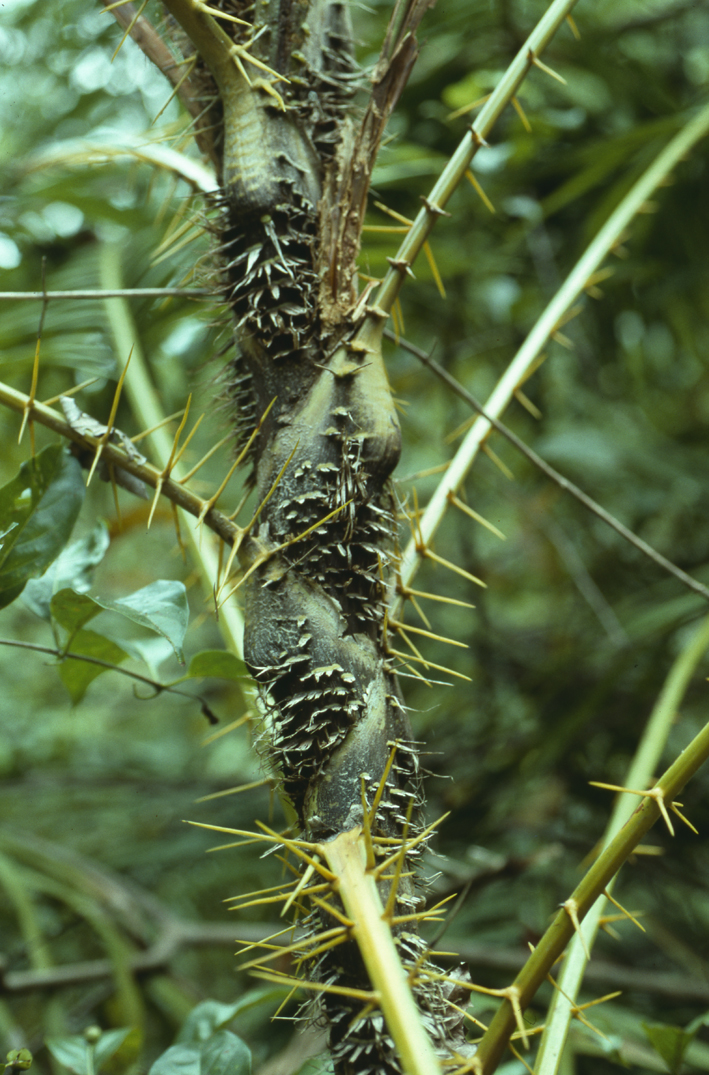- Acanthophoenix
- Acrocomia
- Actinokentia
- Actinorhytis
- Adonidia
- Aiphanes
- Allagoptera
- Ammandra
- Aphandra
- Archontophoenix
- Areca
- Arenga
- Asterogyne
- Astrocaryum
- Attalea
- Bactris
- Balaka
- Barcella
- Basselinia
- Beccariophoenix
- Bismarckia
- Borassodendron
- Borassus
- Brassiophoenix
- Burretiokentia
- Butia
- Calamus
- Calyptrocalyx
- Calyptrogyne
- Calyptronoma
- Carpentaria
- Carpoxylon
- Caryota
- Ceratolobus
- Ceroxylon
- Chamaedorea
- Chamaerops
- Chambeyronia
- Chelyocarpus
- Chuniophoenix
- Clinosperma
- Coccothrinax
- Cocos
- Corypha
- Cryosophila
- Cyphokentia
- Cyphophoenix
- Cyphosperma
- Deckenia
- Desmoncus
- Dictyocaryum
- Drymophloeus
- Dypsis
- Elaeis
- Eleiodoxa
- Eremospatha
- Eugeissona
- Euterpe
- Gaussia
- Geonoma
- Guihaia
- Hedyscepe
- Hemithrinax
- Howea
- Hyophorbe
- Hyospathe
- Hyphaene
- Iriartea
- Iriartella
- Itaya
- Jailoloa
- Johannesteijsmannia
- Juania
- Jubaea
- Jubaeopsis
- Kentiopsis
- Kerriodoxa
- Korthalsia
- Laccospadix
- Laccosperma
- Lanonia
- Latania
- Lemurophoenix
- Leopoldinia
- Lepidocaryum
- Lepidorrhachis
- Leucothrinax
- Licuala
- Linospadix
- Livistona
- Lodoicea
- Lytocaryum
- Manicaria
- Manjekia
- Marojejya
- Masoala
- Mauritia
- Mauritiella
- Maxburretia
- Medemia
- Metroxylon
- Myrialepis
- Nannorrhops
- Nenga
- Neonicholsonia
- Neoveitchia
- Nephrosperma
- Normanbya
- Nypa
- Oenocarpus
- Oncocalamus
- Oncosperma
- Orania
- Oraniopsis
- Parajubaea
- Pelagodoxa
- Phoenicophorium
- Phoenix
- Pholidocarpus
- Pholidostachys
- Physokentia
- Phytelephas
- Pigafetta
- Pinanga
- Plectocomia
- Plectocomiopsis
- Podococcus
- Pogonotium
- Ponapea
- Prestoea
- Pseudophoenix
- Ptychococcus
- Ptychosperma
- Raphia
- Ravenea
- Reinhardtia
- Retispatha
- Rhapidophyllum
- Rhapis
- Rhopalostylis
- Roscheria
- Roystonea
- Sabal
- Sabinaria
- Salacca
- Saribus
- Satakentia
- Satranala
- Schippia
- Sclerosperma
- Socratea
- Solfia
- Sommieria
- Syagrus
- Synechanthus
- Tahina
- Tectiphiala
- Thrinax
- Trachycarpus
- Trithrinax
- Veitchia
- Verschaffeltia
- Voanioala
- Wallaceodoxa
- Wallichia
- Welfia
- Wendlandiella
- Wettinia
- Wodyetia
- Zombia
- x Jubautia splendens
- ?? Acoelorrhaphe
- ?? Bentinckia
- ?? Brahea
- ?? Clinostigma
- ?? Colpothrinax
- ?? Copernicia
- ?? Cyrtostachys
- ?? Dictyosperma
- ?? Dransfieldia
- ?? Heterospathe
- ?? Hydriastele
- ?? Iguanura
- ?? Incertae sedis & excluded names
- ?? Loxococcus
- ?? Micronoma
- ?? Paripon
- ?? Pritchardia
- ?? Rhopaloblaste
- ?? Serenoa
- ?? Washingtonia
Daemonorops oxycarpa, Nelle Forest. Borneo : 607 (1902)
Primary tabs

Distribution
Widespread throughout Brunei. Elsewhere in Sarawak, Sabah and W Kalimantan. Endemic to Borneo. (Dransfield, J. 1997: The Rattans of Brunei Darussalam)A
Discussion
- D. oxycarpa is commonly found in the lowlands at altitudes up to about 900 m above sea level; it seems to be quite tolerant of disturbance and is particularly abundant on alluvial soils. It has also been collected in kerangas.
The armature and coloration of the sheaths of this species are so characteristic that it should easily be identified. The strange bulbous, scarcely wrinkled knee, the purplish brown colour, the papery, grouped spines and the golden-yellow petiole spines are diagnostic. Beccari described the fruit as being rather narrow and pointed, and indeed the type specimen has such fruit; other populations from the 1st Division also have pointed fruit while those from eastern Sarawak and Sabah have ovoid fruit. (Dransfield, J. 1997: The Rattans of Brunei Darussalam)A
Etymology
- Sharp fruit (Dransfield, J. 1997: The Rattans of Brunei Darussalam)A
Common Name
- Uwai Bintango (Dus.), Wi Tedong (Ib.) (Dransfield, J. 1997: The Rattans of Brunei Darussalam)A
Uses
- The shoot and fruit are eaten; the cane is used for weaving baskets. (Dransfield, J. 1997: The Rattans of Brunei Darussalam)A
Description
- Moderate clustering rattan climbing to 15 m; stem without sheaths to 20 mm diam., with sheaths to 30 mm diam., internodes rarely more than 10 cm long. Sheaths dull green but almost completelycovered in thick purplish-brown indumentum and sparse groups offlat papery, laciniate, hairy-margined dull brown spines to 2 cm, the groups often arranged in partial whorls; knee very conspicuous, narrow and swollen, but scarcely wrinkled; ocrea inconspicuous. Leaf cirrate to 3 m including cirrus to 1.2 m and petiole to 40 cm; petiole margins armed with a regular row of conspicuous long rigid golden-yellow spines to 7 cm; leaflets regularly arranged, c. 60 on each side of the rachis, 2-3 cm distant, the longest to 27 × 1.5 cm, rather limp, the upper surface with up to 5 rows of bristles, the margins bristly, but the lower surface with only the main vein bristly. Inflorescence pendulous, to 50 cm, with primary bracts dull brown tomentose, armed with papery spines, the whole bracts quickly falling at anthesis; partial inflorescences c. 6, rather lax, to 15 cm. Mature fruit ovoid, sometimes rather sharply pointed, to c. 1.5 × 1 cm, rarely more, covered in 16 vertical rows of pale brown to chestnut-brown, rather convex scales. Seed ovoid to oblong, to 12 × 7 mm; sarcotesta sweet; endosperm deeply ruminate. Seedling leaf not known. (Fig. 13). (Dransfield, J. 1997: The Rattans of Brunei Darussalam)A
Materials Examined
- BEL: Sungai Liang, Andulau F.R., Wong 81. TEM: Amo, Belalong, Stockdale 9; Amo, Bt.Belalong, Wong 1418. TUT: Rambai, Tasek Merimbun, Bernstein 65. Rambai, Bt.Bahak, Coode 7045.Without prov.: BRUN 15083; BRUN 15313; BRUN 15407. (Dransfield, J. 1997: The Rattans of Brunei Darussalam)A
- Log in to post comments

